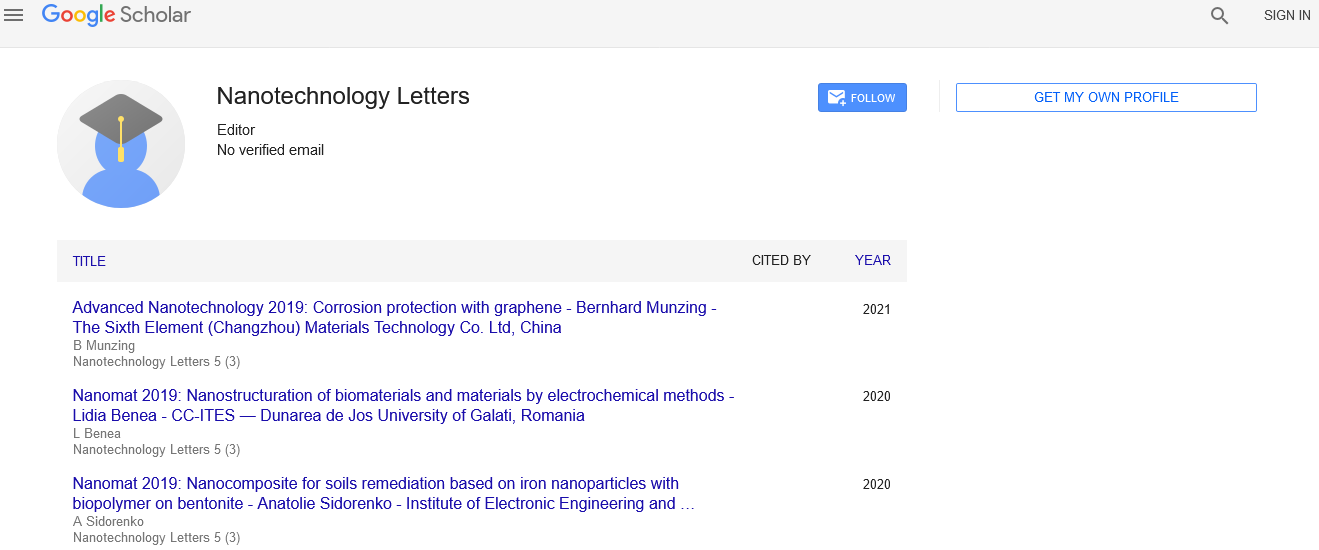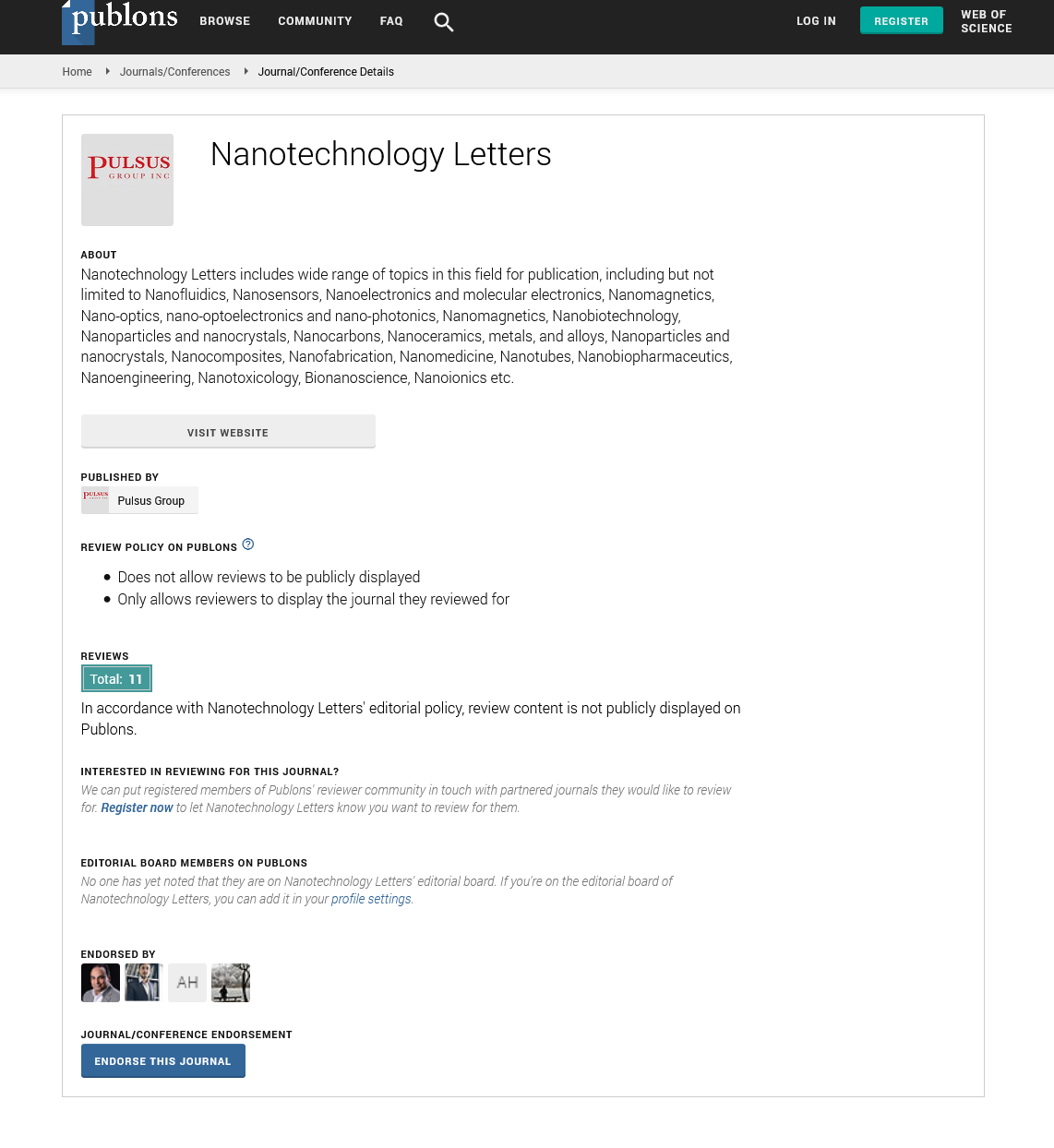The techniques of microfabrication in medical and pharmaceutical devices
Received: 03-Nov-2021 Accepted Date: Nov 17, 2021; Published: 24-Nov-2021
Citation: Mittal T. The techniques of microfabrication in medical and pharmaceutical devices. Nanotechnol Lett. 2021;6(2):6.
This open-access article is distributed under the terms of the Creative Commons Attribution Non-Commercial License (CC BY-NC) (http://creativecommons.org/licenses/by-nc/4.0/), which permits reuse, distribution and reproduction of the article, provided that the original work is properly cited and the reuse is restricted to noncommercial purposes. For commercial reuse, contact reprints@pulsus.com
Description
Microfabrication is the process of creating miniature structures below the micrometer range. Historically, the earliest microfabrication techniques were used to manufacture integrated circuits, also known as "semiconductor manufacturing" or "semiconductor device manufacturing." Flat screens and solar cells use similar technology. The miniaturization of various devices poses challenges in many areas of the natural and engineering sciences, including physics, chemistry, materials science, computer science, ultra-precision engineering, manufacturing processes, and device design and it .also leads to various interdisciplinary studies. The most important concepts and principles of microfabrication are microlithography, doping, thin films, etching, bonding and polishing. The exact process depends on a myriad of factors, including the company that manufactures it, the tools that workers can access, and the required specifications. With this in mind, typical micro components are created by first depositing the film and then patterning the film with various micro features. The company can then etch off a portion of the top layer of the film. Thin films play an important role in microfabrication. Microfabricated products are usually manufactured using multiple thin films. In electronics, these foils may contain conductive metals that allow electricity to flow. Optical devices, on the other hand, can have reflective or transparent films to improve visibility and transparency. In addition, medical devices can be fitted with a chemical film to control the growth of microorganisms. Microfabrication is by no means a quick or easy process. Reportedly, manufacturing a typical memory chip requires about 30 lithography, 10 oxidations, 20 etchings, and 10 doping steps. Companies often measure the difficulty of manufacturing a product by the number of masks. This refers to the number of different layers of the final product pattern. If the product has 120 different layers, the number of masks will also be 120.
Microfabrication techniques: The main microfabrication technologies are photolithography, thermal oxidation, thermal annealing, soft lithography, film deposition, etching, and wafer bonding. Microfabrication techniques are used to create patterns of cells on the surface. This cell patterning is a necessary component for basic research in cell-based biosensors, cell culture analogs, tissue engineering, and cell biology. Photolithography is used to transfer user-created shapes to a material by selectively exposing a photosensitive polymer. Thermal oxidation is used in the dry oxidation process available at temperatures up to 0.5 micron with oxide thicknesses from 950°C to 1050°C. Vapour or wet oxidation process available at temperatures up to 1.0 micron with oxide thicknesses from 950°C to 1050 °C. The thermal annealing process is available at temperatures from 400°C to 1100°C in nitrogen and forming gas environments. Low-stress silicon nitride and silicon oxide in plasma chemical vapor deposition and deposition processes available at 350-450°C. PECVD gas SiH4, NH3, N2O, He and N2. Standard dry etching RIE process for silicon, silicon dioxide, silicon nitride, polyimide, photoresist. RIE gas O2, CF4, SF6, CHF3 and N2. For deep reactive ion etching, a standard Bosch process that can be used for deep etching of silicon, with a typical aspect ratio of 40: 1. DRIE gas SF6, C4F8, O2, N2, He and Ar. Water bonding is a direct bonding process that can be used for silicon-silicon bonding at room temperature and 1000 newton’s. Anode bonding process for silicon-glass bonding available at 450 °C and 1000 volts. Bonding can be done with an alignment accuracy of 0.5 micrometres. Etching is a process aimed at creating topographical features on a surface by selectively removing material by physical or chemical means. Etching is isotropic if it travels the same in all directions and anisotropic if it travels in a particular direction. These two etching mechanisms are shown. Isotropic etching is performed not only in the depth direction but also in the lateral direction, resulting in a curved profile. Anisotropic etching is unidirectional and usually selectively increases the depth of the cavity.






